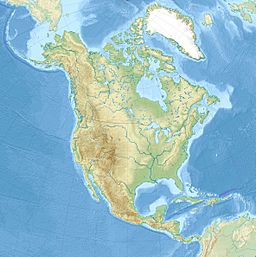Trapper Lake (Alaska) facts for kids
Quick facts for kids Trapper Lake |
|
|---|---|
| Location | Matanuska-Susitna Borough, Alaska, United States |
| Coordinates | 61°59′53″N 150°14′13″W / 61.99806°N 150.23694°W |
| Basin countries | United States |
| Surface elevation | 190 feet (58 m) |
Trapper Lake is a beautiful lake in Alaska. It is located north of Wasilla. This lake is special because you cannot reach it by road. You can only get there by air in the summer or by snow machine in the winter. During spring and fall, when the ice is melting or forming, it's hard to get to the lake.
How to Get to Trapper Lake
Traveling by Air
The main way to reach Trapper Lake in summer is by float plane. These planes can land right on the water! You can fly from places like Kashwitna Lake or Willow Lake. Flights are also available from Anchorage, but they cost more because of the longer trip. Usually, the lake is free of ice by late May. The last flights of the year are typically in early October.
Traveling by Snow Machine
In winter, you can get to Trapper Lake using a snow machine. This usually starts in December. One way to go is from the Rabideaux trail head. Another popular route crosses the Susitna River. The Mid-Valley Trail Club helps keep these trails in good condition.
It is very important to be careful when crossing the Susitna River. The ice can be dangerous, especially if the weather gets warm or it rains. Always check for updates on trail conditions before you go. The river crossing is usually marked with stakes until early April. After the river crossing closes, you might still be able to use the Rabideaux trail for a week or two, depending on the snow.
Fish in Trapper Lake
Trapper Lake is not stocked with fish by people. It has a large population of pike. These fish are not native to the lake. They came into the lake in the 1980s during a big flood. The flood allowed the pike to swim into the lake and its creeks.
When the pike arrived, they ate many of the native fish, like trout and silver salmon. For a while, people caught very large pike because there was so much food for them. Today, the pike are usually about 20 inches long. You can catch them in both summer and winter. The lake is generally shallow and has many rocks that are not marked on maps, so be careful if you are boating.



